Max Ginsburg is a painter with a conscience, using traditional realism and exquisite technique to explore his feelings about the human condition. Unafraid to paint the provocative and controversial social issues of our times, Ginsburg is helping bring representational painting into the contemporary age — a venture that began some 70 years ago.
Prolific New York-based painter Max Ginsburg is today one of the most respected and highly accomplished realist painters, but it’s been a long, arduous journey. Prior to his birth, his family had immigrated to the United States in 1912 and in 1920 became naturalized citizens. They then traveled to Paris, where Ginsburg was born, and in 1933 his family brought him back to the U.S., living in Brooklyn, New York, during the Great Depression. These economic hard times, which were both witnessed and experienced by Ginsburg and his family, raised the young artist’s conscience and compassion and instilled in him a sensitivity and heightened awareness of social injustice.
World War II also proved pivotal for Ginsburg, who is Jewish. “We lived in Boro Park, a Jewish neighborhood, right near Irish Catholic Sunset Park,” Ginsburg remembers. “The kids were extremely anti-Semitic, and often threatened to beat me up, claiming that I had killed Christ. [This is how i]ssues of social justice and man’s inhumanity to man became the focal point of my art.”
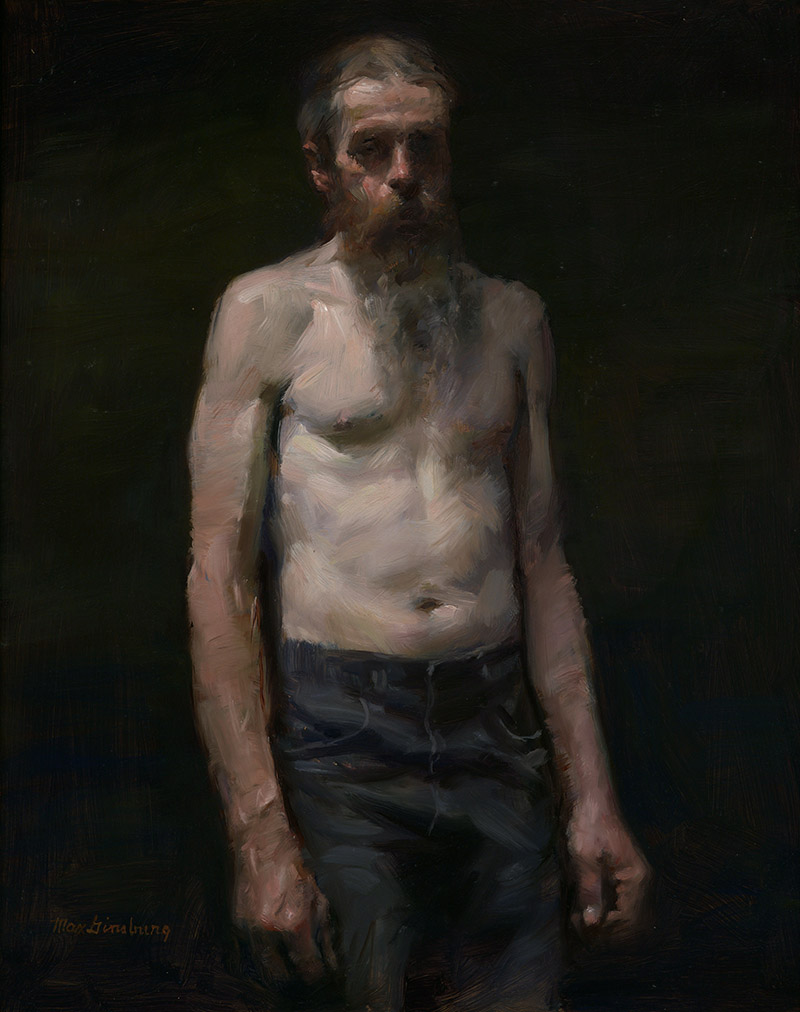
Path to Realism in Art
Ginsburg’s first formal training come in 1946, when he entered the High School of Music & Art in New York City. He later graduated, having been voted the “best artist of the class.” His next stop was Syracuse University on scholarship. It was during these early years that Ginsburg was first exposed to the evolving, modernist art world — a world he would continue to resist for decades.
“My most challenging experience as an artist was finding teachers and schools who could teach the skills needed to paint realistically and galleries who would exhibit realist art,” Ginsburg says. “Modern art was so pervasive and dominating in 20th-century art that the freedom of expression and the opportunity to develop realistic painting was severely limited.”
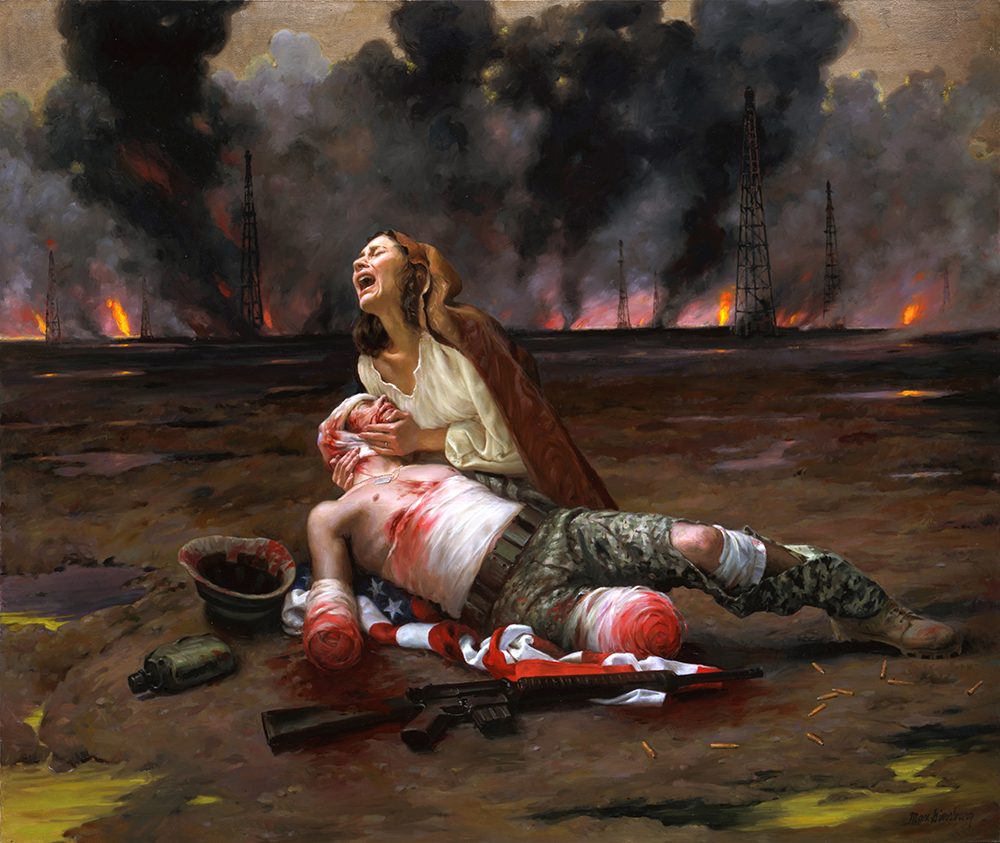
Ginsburg did what he had to do to support his growing family, taking employment as a commercial artist. However, his drive to develop his own fine art and creative voice forced a career change into teaching, and he began teaching at the High School of Art & Design — all while he continued to take an active part in the peace and Civil Rights movements, among other causes.
A formative relationship was forged in the 1970s, when Ginsburg and Irwin Greenberg began a Morning Painting Group in which many talented students would gather to paint from life. The students included Steven Assael, Costa Vavagiakis, Garin Baker, Ricky Mujica, and Mark Texeira, and many more. “We felt a commitment to the development of realistic painting and to the importance of giving serious, talented students an opportunity that was otherwise not available,” Ginsburg says.
In was during the 1970s and 1980s that Ginsburg’s fine art career really began to find its footing, as he earned gallery representation at Harbor Gallery, Gallery 306, Reyn Gallery, and the old Grand Central Gallery, to name just a few. Ginsburg was also achieving some financial stability as an illustrator and teacher, but says, “While I enjoyed earning the money and was grateful for the opportunity, I didn’t feel that the ideas and concepts were mine. From 1980 – 2004 I was so busy doing illustrations that I had little time to paint my fine art.”
After 24 lucrative years (1980-2004) of painting illustrations for the leading publishing companies, Ginsburg devoted himself to painting his fine art full time. He painted the reality of New York City life as he saw it, quite different from his illustration work.

Ginsburg’s process is strongly rooted in Old Master techniques, working alla prima, or painting directly on canvas and painting wet-on-wet. “I usually work on stretched canvas, but on smaller paintings I use gessoed hardwood panels,” the artist continues. “On a toned panel I start by blocking in the larger forms or shapes of the model posing, without a preliminary drawing. I am initially concerned with placement and design, followed by careful observation of the model’s proportions. I paint thinly at first, using turpenoid, as in a wash drawing. Then I work toward getting my values and begin using linseed oil as my medium. Color soon becomes a part of my process to help develop the forms — but constant and careful observation of the model is key to achieving my goal. As Charles Hawthorne once told my father, who was his student in 1920, ‘Paint what you see, not what you know.’”
He goes on, “In the case of larger multi-figure compositions, I would draw initial pencil sketches based on my concept. Then I would have models pose for painting studies to give me a greater individualized image of each person. Next I would sketch, in pencil on paper, the composition of these figures. Then I would grid the sketch, determine the size of the final canvas, stretch the canvas, grid it in proportion to my smaller sketch, and then, using charcoal, roughly indicate the placement of the figures on the gridded large canvas. Then the models would pose again as I block in the figures from life.”
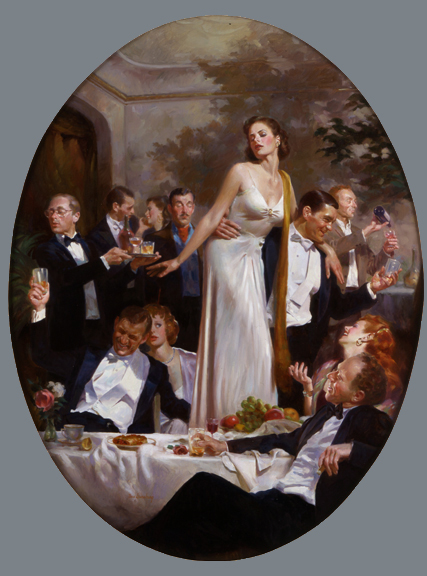
Ginsburg takes an alla prima approach: “I start painting with large, basic shapes followed by the development of the smaller forms. But always from the beginning to the end of the painting the careful observation (drawing) of the model is constant and essential to reflect the unique character of the model’s form.”
“This is why I consider the human form so important in my art,” he says. “My painting is influenced and inspired by so many of the Old Masters who reflected the realities of social life in their time and even commented on morality, hypocrisy, torture, and war and peace, as a social conscience in their society. Involved in this discussion is the issue of narrative art and its various directions. I raise this issue because with the rise of ‘modern’ art in the 20th century, there has been a condemnation of social issues in art which exists even among many fine realist painters today.”
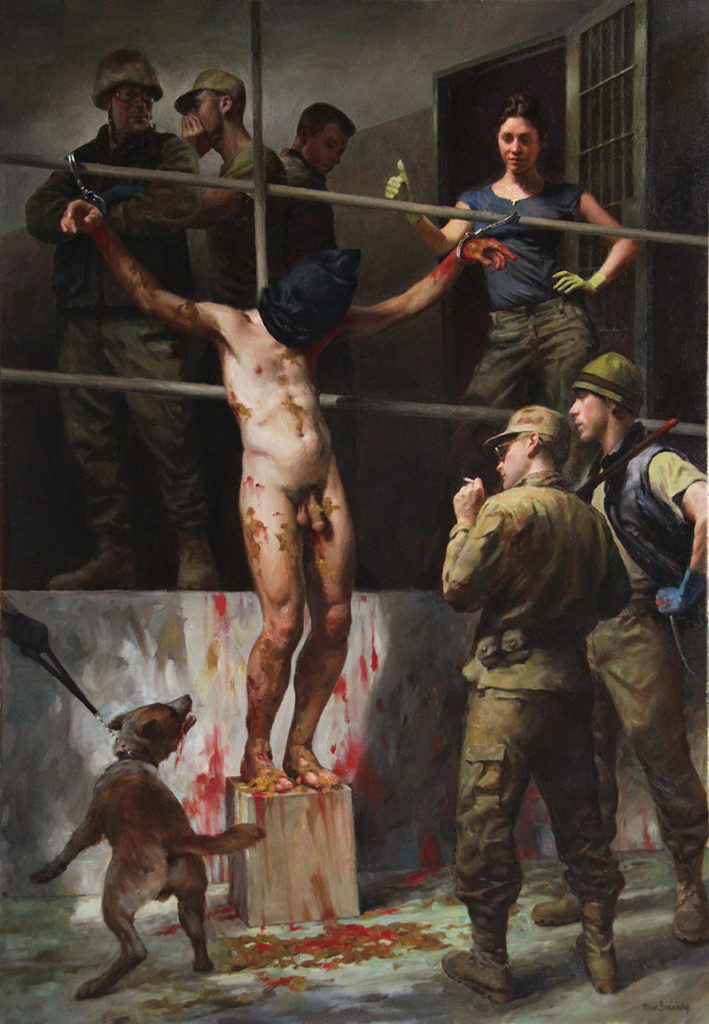
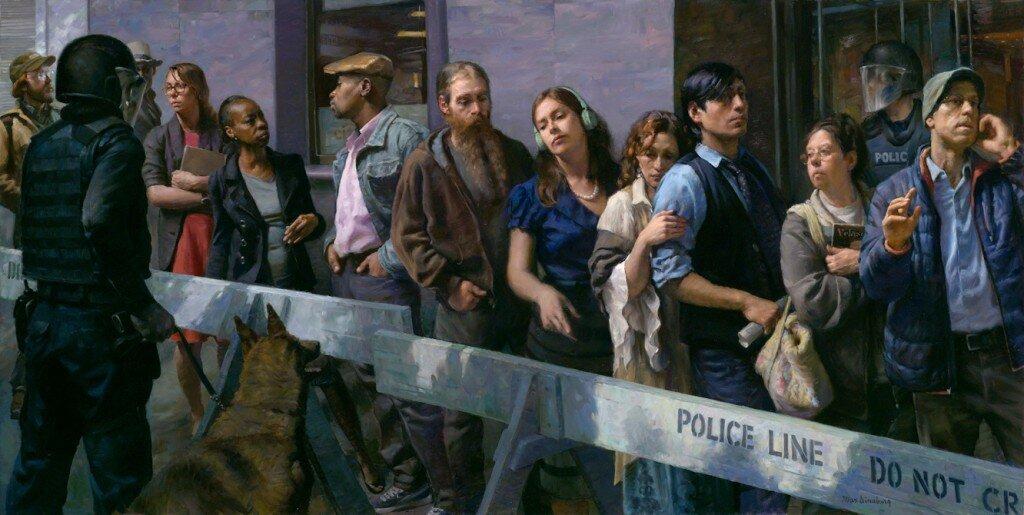
Inspired by the Old Masters, Ginsburg painted this multi-figure painting. The artist started painting with a concept expressing a feeling of human need and insecurity in a society of regulations and controls. He identifies with these people, painting them with individuality and dignity, not like manikins.
Ginsburg first made a conceptual rough pencil sketch based on his many years of seeing people waiting on lines for one thing or another. In order to give the people individuality and a greater reality of character and gesture he called friends and models to pose in his studio for painting studies. Then, in pencil, he copied his studies into a composition and made a grid to roughly indicate the position of each person on the large canvas. Each model then posed several times as Ginsburg painted them from life.
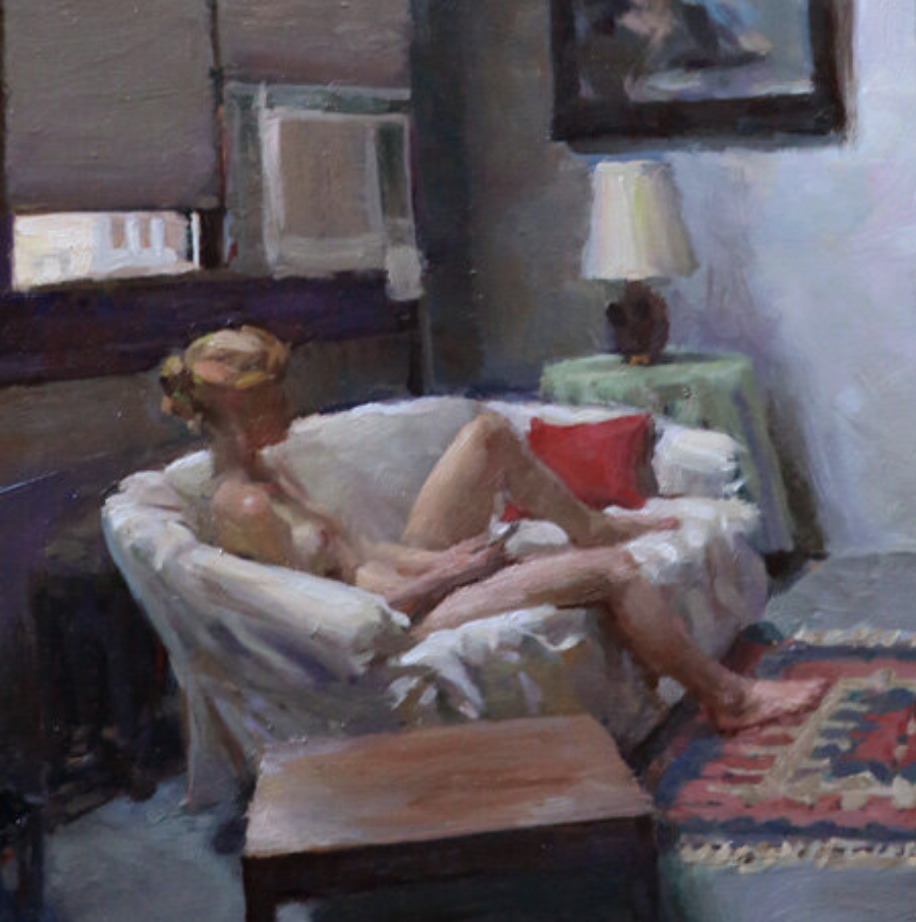
Alla Prima painting of the interior of Ginsburg’s skylight studio with a nude model posing on a couch. It is a painting composition where there is a spatial relationship of a model in an environment. The poetic use of color and light describes the subtle relationships of form. Ginsburg skillfully paints the reality of the forms he sees.
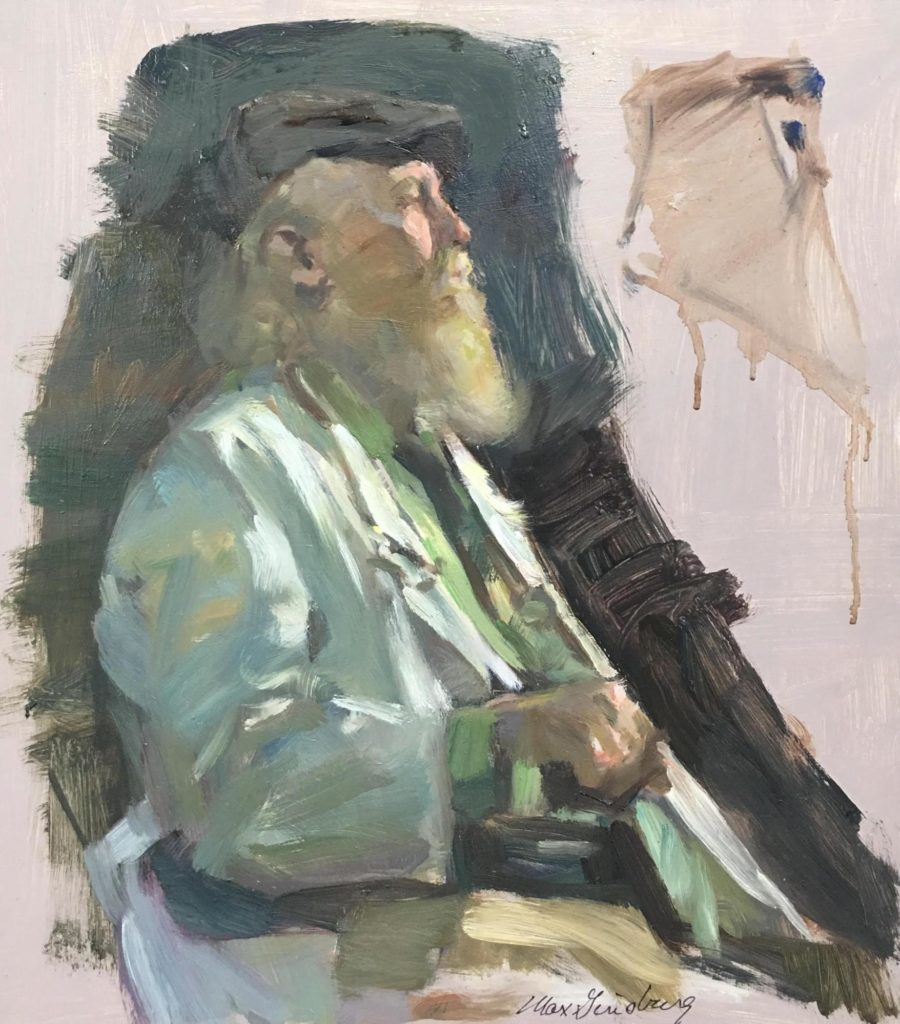
Alla Prima Demo in an ASL painting class. Here is a poetic use of color helping to describe form. Notice the instructive painting in the upper right corner that Ginsburg used to show a student the basic design he used when starting the painting.

Alla Prima painting from life. Ginsburg captures the spirit and gesture of this young woman. He paints directly wet on wet with no preliminary drawing and carefully observes the unique forms of the shapes of lights, darks and colors. His painting is fluid as he paints what he sees, not memorized formulas.
Note: In 2010, Max Ginsburg began teaching “painting from life” workshops in the United States and in countries around the world. However, because of the COVID-19 pandemic, he is currently teaching his painting class at the Art Students League of New York online, and is also planning to teach his painting workshops online through Zoom. These will include painting demos of head and figure studies and lectures of Ginsburg’s work and many of the Old Masters who influenced him.
To learn more, connect with Max Ginsburg:
Website | Newsletter | Instagram | Facebook
This article was featured and written by Andrew Webster in 2017 in Fine Art Today and has been updated for 2021.
> Sign up to receive Fine Art Today, our free weekly e-newsletter
> Click here to subscribe to Fine Art Connoisseur magazine, so you never miss an issue








